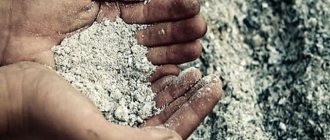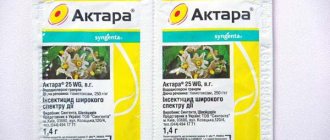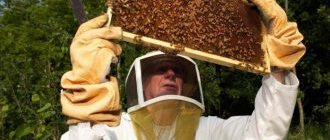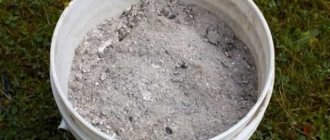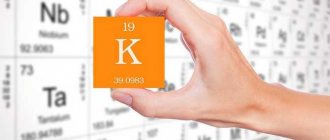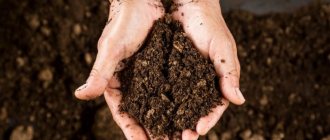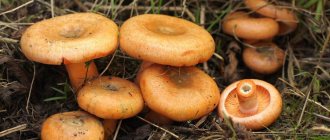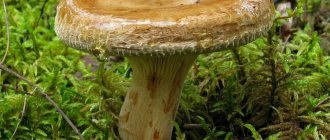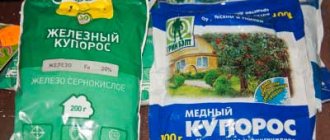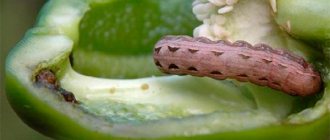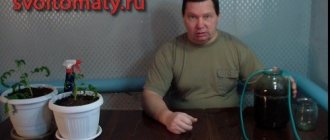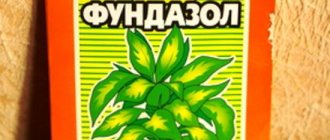Experienced summer residents use many drugs, wanting to get rid of diseases and pests on their site. One such remedy is Bordeaux mixture. Although the remedy has been around for a long time, it is still widely used today. The fungicidal properties of the drug were discovered in the 19th century. Initially, Bordeaux mixture was used for processing vineyards, and then began to be used for other crops.
Bordeaux mixture is an effective and inexpensive remedy for the treatment and prevention of diseases of garden and vegetable crops. The popularity of the drug is due to the availability of ingredients and the ease of preparing the solution at home.
What is Bordeaux mixture
Bordeaux mixture is a mixture of an aqueous solution of copper sulfate and slaked lime.
In stores, there are two packets of dry mixture in packages. One contains copper sulfate, the other contains slaked lime.
The liquid can also be prepared from copper sulfate and quicklime.
Bordeaux mixture is used in gardening to spray trees. Treating apple and pear trees with Bordeaux mixture will save the trees from rot and scab. In the fight against aphids, Bordeaux mixture will not bring the desired results.
Karbofos - protection against insects and pests
A fast-acting remedy in the fight against aphids is karbofos. Kills pests upon contact with the surface of the body and does not penetrate into the foliage.
The liquid should be used with caution, as copper compounds are toxic to humans.
When working with Bordeaux mixture, you must take precautions and use protective equipment.
Protection when working with Bordeaux mixture
Advantages and disadvantages of the drug
Bordeaux mixture has many positive qualities.
- The product is fast-acting and universal in terms of use.
- Highly effective against the most common diseases on garden, vegetable and ornamental crops.
- Long validity period. After using Bordeaux mixture for prevention, it protects plants for a whole month.
- Thanks to copper sulfate in the product, plants are saturated with copper during processing.
Interesting!
A sign of copper deficiency in plants is weakening of the crop and decreased immunity. Copper deficiency is most often observed in acidic or peaty soils.
Bordeaux mixture is securely held on the leaves, so re-infection is excluded
- The product is securely held on the leaves and twigs of plants, so that re-infection with the disease is excluded.
- The drug is inexpensive and widespread.
Although Bordeaux mixture is popular among gardeners, it has a number of disadvantages that are important to know about before use.
- If used incorrectly, Bordeaux mixture can be harmful to human health. So the instructions for use must be studied without fail!
- If you add it in too much quantity, it can burn the crop.
- The solution is made according to a certain scheme.
How to make Bordeaux mixture yourself
Many people ask themselves the question of what Bordeaux mixture is needed for, the answer is simple. You can prepare Bordeaux mixture yourself from available ingredients. The liquid is an effective, universal and inexpensive means for treating and preventing diseases of trees and shrubs.
To treat the garden, Bordeaux mixture is used with a concentration of 1% and 3%. Liquid of 3% concentration is used in the spring for the first spraying of trees and shrubs. During this period, the buds are still open, copper will not burn the leaves and ovaries. A solution of 1% concentration is used at the moment when the trees and shrubs have already faded, the ovaries and leaves have formed.
To prepare 10 liters of liquid at home you need:
- two enamel or plastic buckets with a volume of 5 and 10 liters
- copper sulfate (100g for a 1% solution, 300g for a 3% solution)
- slaked lime (100g for a 1% solution and 450g for a 3% solution)
- kitchen scales
- wooden stick
- latex gloves
- respirator
- protective clothing
Bordeaux mixture is prepared as follows:
Pour slaked lime into a 10 liter bucket, add a small amount of water and mix. Add cold water to a volume of 5 liters. The contents are mixed until the solution resembles milk.
Pour copper sulfate into a 5-liter bucket and add one and a half liters of warm water. Stir with a stick until the copper sulfate is completely dissolved. Then add cold water up to five liters.
The prepared solution of copper sulfate is added, stirring, to a bucket of lime. The solution is thoroughly mixed until it acquires a bluish-turquoise color.
A solution of copper sulfate is added to a bucket of lime milk, and in no case vice versa.
Security measures
Bordeaux mixture must be used correctly, otherwise it can harm the crops.
- When using Bordeaux mixture, you must wear safety glasses, gloves, and a respirator.
- Bordeaux mixture shows good results when used in spring or autumn. At the same time, this product should not be used while the crop is ripening.
- If the product is applied in large quantities or the dosage was not followed when diluting the dry mixture with water, burns first appear on the leaves of the treated crops, and then they may even die!
- Fruits and vegetables collected from plants that have just been sprayed with Bordeaux mixture are unsuitable for food. You need to remember - fruit trees are processed no later than 15 days before harvest, vegetables - 20 days, and berries - 25 days. But it is better, of course, not to spray the plants with this product at all during the active growing season (flowering, fruiting).
- If treatment with Bordeaux mixture is carried out very often, copper will begin to accumulate in the ground, which will lead to slower development and reduced plant productivity.
Analogues of Bordeaux mixture
- Do not mix Bordeaux mixture with soap or other types of fungicides.
- Plant processing is carried out in calm weather when there is no rain. It is advisable to do this in the early morning or evening when the sun is not active.
Interesting!
Knowing when to treat crops with Bordeaux mixture and what solution to use for this, you can avoid the appearance of many ailments in the area.
The shelf life of Bordeaux mixture under proper conditions is almost unlimited. However, to do this you need to keep it in a dry, dark place. It is also important to ensure that pets and children do not have access to the fungicide! As for the finished solution, its effectiveness remains for 24 hours, no more.
Instructions for use of the drug
Preparing Bordeaux mixture is a very important process and should be approached with all responsibility. The most important thing in this matter is maintaining proportions. Incorrect dosage can lead to plant death.
To avoid this, the mixture must be diluted in accordance with the dosage. For 10 liters of water you will need:
- 100gr. copper sulfate, 75g. lime for preparing 0.5 - 0.75% solution
- 100gr. copper sulfate, 150g. lime for 1% solution
- 300gr. copper sulfate, 450g. lime for 3% solution
The prepared solution can be used to treat young trees, shrubs, onions, beets, tomatoes, and cucumbers. For preventive purposes, grapes, raspberries, and strawberries are sprayed.
The composition of the Bordeaux mixture consists of lime and copper sulfate. The main substance in the liquid is copper compounds, which serve as protection.
For novice gardeners, diluting Bordeaux mixture will seem difficult. Therefore, analogues are often used. They are easy to use and also effective.
For example like:
- hom
- cuproxate
- abiga-pik
Spring treatment of the garden with Bordeaux mixture defeats the following diseases
For apple trees, pears and other types of trees it is treated:
- scab,
- leaf spotting,
- moniliosis,
- causative agents of other bacterial and fungal diseases.
In berry bushes (gooseberries, currants, raspberries), strawberries and strawberries:
- anthracosis,
- rust,
- leaf spotting,
- other bacterial and fungal pathogens.
For plums, cherries, sweet cherries, apricots:
- kleasterosporiosis,
- coccomycosis,
- moniliosis,
- other diseases.
In tomatoes, cucumbers and other vegetable crops:
- late blight,
- macrospariosis,
- anthracnose,
- ascochyta blight,
- different types of spotting,
- other diseases.
For grapes:
- anthracnose,
- black rot,
- mildew,
- other common diseases.
Work time
Trees and shrubs are treated in early spring and autumn shortly before the first frost.
Treatment in autumn
November is the best time for processing. The vegetative stage of plants is coming to an end and therefore the liquid will not harm them. On the contrary, it will destroy all the diseases that have accumulated over the season. Another advantage of autumn treatment is the destruction of pests in your garden, without harming beneficial insects.
Treatment in spring
In early spring, the garden is treated with a 3% solution of Bordeaux mixture. The purpose of the treatment is to destroy fungal spores and pathogens.
The greenhouse should be treated immediately after the snow melts. This will get rid of weeds. Destroy parasites and mold.
Harm to humans
The drug is used only for its intended purpose. But in case of a hit:
- on the skin - wash off with soap,
- into the eyes - rinse with plenty of running clean water,
- signs of poisoning - fresh air, activated carbon (1g/1kg of weight) until the doctor arrives.
All work is carried out using personal protective equipment. Consumption of food and water in the treated area by workers is prohibited. Smoking is also prohibited during this time.
A time-tested, effective product in a convenient form for protecting fruit and berry crops from diseases.
Advantages:
Best before date:
2 years
Treatment of popular vegetable and horticultural crops with Bordeaux mixture
Trees are treated before and after bud break with a 3% solution. To prevent curling and spotting. Then during the growing season you need to treat with a 1% solution.
Treatment of gooseberry and currant bushes with Bordeaux mixture
Gooseberry and currant bushes are treated with a 3% solution during the period of bud swelling. This will help prevent spots on the leaves. During the growing season, the proportion of Bordeaux mixture is reduced to 1%. Bushes are treated no more than three times.
Treatment of pears, apple trees and quince with Bordeaux mixture
Bordeaux mixture will serve as a lifesaver for apple, pear and quince trees against scab, black cancer and fruit rot. In the spring, apple and pear trees are treated with a 3% solution, and during the growing season with 1%. The spray dosage for one adult tree is about 10 liters, for a young tree 2 liters are enough. During the entire season, no more than six treatments are carried out.
Treatment of grapes with Bordeaux mixture
Most often, Bordeaux mixture is used to spray grapes. Treatment with liquid will help get rid of fungal diseases, black rot, rubella. The grape itself is a delicate plant; Bordeaux mixture can inhibit the growth of young vines and reduce the quality of the grapes. Therefore, experienced gardeners advise treating with a 3% solution in early spring. And subsequently use preparations that do not contain copper.
Treatment of strawberries and raspberries with Bordeaux mixture
To prevent strawberries and raspberries from leaf spot in the spring, treatment is carried out with a 3% solution. Next, use a 1% solution based on a dosage of 1.5 liters per 10 square meters of raspberry and strawberry planting. Treatment should be carried out after picking the berries. Raspberries and strawberries are sprayed no more than twice during the entire season.
Treatment of tomatoes with Bordeaux mixture
Treating tomatoes with liquid is effective for the prevention of late blight and macrosporosis. During the growing season, use a 1% solution, two liters per ten squares of planting. Tomatoes are sprayed no more than four times per season.
Treatment of cucumbers, watermelons and melons with Bordeaux mixture
Treating cucumbers, watermelons, and melons with Bordeaux mixture is an excellent prevention of spotting and bacteriosis. During the growing season, use a 1% solution for cucumbers at the rate of two liters per ten squares of planting. For watermelons and melons, one liter is enough. Treatment is carried out no more than three times per season.
Treatment of potatoes with Bordeaux mixture
Potatoes are treated during the growing season with a 1% solution to prevent late blight, following a dosage of one liter per 10 squares of planting. Spraying of potatoes is carried out as needed, no more than 14 times during the entire season.
Treatment of ornamental shrubs and flowers with Bordeaux mixture
Shrubs, roses and other flower crops are treated with a 3% liquid solution in early spring before buds appear. Spraying is a prevention of spotting and rust; it is carried out no more than three times a season.
Treatment of onions with Bordeaux mixture
Processing of onions to combat rot and rust is carried out with a 1% solution. At the rate of one liter per ten squares of planting, no more than three times per season.
Treatment of beets with Bordeaux mixture
All types of beets are treated with Bordeaux mixture. The treatment helps get rid of downy mildew and rust. You will need one liter of solution per 10 “squares” of planting.
Application in gardening and horticulture
Also check out these articles
- Potato variety Zest
- Grape variety Moldova
- How to milk a goat correctly
- Business growing greens
Bordeaux mixture can be used to combat various ailments. In gardening and vegetable gardening, this fungicide is used in the spring or before winter in several cases.
- Treatment of stone fruit plants to prevent rot and bacterial diseases.
- Spraying pome trees against favus, fruit rot, spotting, bacterial necrosis.
- Treatment and protection from diseases on ornamental and fruit and berry bushes.
- This drug is also strong for combating diseases on coniferous trees.
Treatment of pome trees against favus, fruit rot, spotting, bacterial necrosis
- Grape growers often purchase Bordeaux mixture to treat ash and black rot on grapes.
- This remedy is also very popular in gardening. It is used to treat tomatoes and potatoes against late blight, beets against rust and cercospora, and onions against rot.
Soil disinfection
Soil disinfection is carried out in early spring and autumn before the onset of frost.
During the autumn period, November is the best time. The vegetative stage of plants is coming to an end and therefore the liquid will not harm them. Bordeaux mixture will destroy diseases that have accumulated over the entire season. Another advantage of autumn treatment is the extermination of garden pests without causing damage to beneficial insects.
Spring treatment is aimed at destroying fungal spores and pathogens. During kidney swelling, use a 3% solution. For further treatments, a 1% solution is suitable.
Cost and analogues
Bordeaux solution is not only effective, but also very accessible to all gardeners and gardeners. The price of the finished product is 550 rubles per bottle with a capacity of 500 ml. Also sold in plastic bottles.
Fungicide substitutes:
- Abigo-pig;
- Cuproxat;
- Home;
- Oxy-hom;
- Poly-hom.
The drug can be replaced with stronger agricultural products - Strobi, Kvardis, Skor, Ridomil, Acrobat, Vectra. The difference lies in the strength of the effect on the pathogen.
How to replace Bordeaux mixture
If you do not have the desire or time to prepare Bordeaux mixture, it can be replaced with analogues. They are no worse and are very easy to use. Such analogues are Polychom and Oxychom. They destroy diseases outside and inside plants. Bordeaux mixture cannot cope with this. In addition, these analogues can be mixed with other drugs. But Bordeaux, on the contrary, should under no circumstances be mixed with anything.
Therefore, the choice is yours as to what is the best way to spray your garden plot.
Gardener mistakes
- It is prohibited to use Bordeaux mixture with various fertilizers or elements that are neutralized in an alkaline environment.
- When preparing, many people mix vitriol and lime at once and then dilute it with water. In this case, the Bordeaux composition will lose its properties; for preparation you must follow certain rules.
- During long-term storage, the solution loses its effectiveness, so it is necessary to use only freshly prepared liquid.
- The composition must not be further diluted with water.
By following all the rules, you can get rid of mold, pests, and various plant diseases in your garden; Bordeaux mixture will help with this.
+2
0
